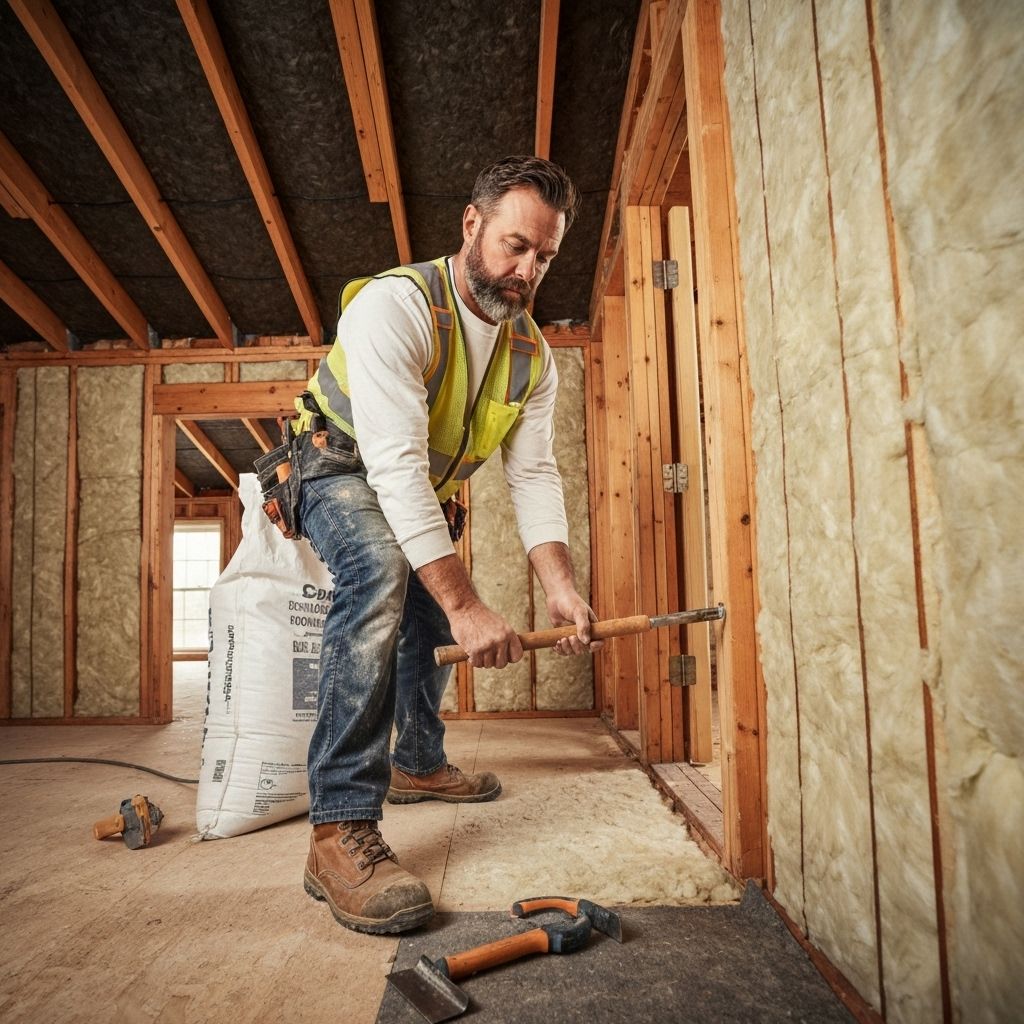Insulate to Create: Boost Your Home’s Power Usage

In the realm of creating a comfortable home and remaining mindful of energy consumption, thermal insulation plays a crucial role. insulation companies overlook the importance of proper insulation, as it can be the key to transforming your living space into an energy-efficient sanctuary. By addressing the time to address your home's insulation needs, homeowners can enjoy lower energy bills, enhanced comfort, and even contribute to a healthier planet.
In this comprehensive guide on home insulation, we will delve into everything you need to know about insulating your home effectively. Beginning with understanding R-values to choosing between batt and blown-in insulation, we will provide you with the information necessary to make informed decisions. You’ll learn how to check the insulation in your home, discover the surprising benefits of proper insulation, and find tips for sealing air leaks that can undermine your efforts. Whether you are an experienced DIYer or a newcomer to home upkeep, this detailed guide will help you innovate by insulating.
Grasping Insulation Basics
Thermal insulation is a crucial component of energy-saving dwellings, designed to minimize heat transfer between the inside and outside of a house. By reducing the movement of heat during the cold months and summer, insulation helps ensure a comfortable indoor climate, making a home more enjoyable year-round. This is notably crucial for homeowners seeking to lower energy bills and enhance their total comfort.

The performance of insulation is evaluated by its R-value, which indicates its resistance to conduct heat. Larger R-values mean superior insulating effectiveness. It is essential to choose the right insulation material and depth based on your specific climate, home design, and purpose of each area. Understanding insulation choices, such as fiberglass insulation, foam boards, or cellulose insulation, can help homeowners make informed choices tailored to their needs.
Effective insulation goes together with sealing air leaks to enhance energy efficiency. Before putting in thermally protecting your home, it is crucial to locate and seal any air gaps in your residence. Air leaks can considerably lower the effectiveness of insulation, allowing conditioned air to escape and unconditioned air to enter. By fixing these leaks, property owners can boost their thermal barrier's performance, resulting in enhanced coziness and decreased energy expenses.
Insulation Types and Their Benefits
When it comes to household thermal insulation, there are numerous options, each with its unique advantages. Batt insulation, often made from fiberglass, is a widely used option. It comes in ready-made panels or rolls, making it simple to apply in vertical surfaces, attics, and floor spaces. The key selling point of batt insulation is its affordability and effectiveness in reducing heat transfer, maintaining your home cozy in winter and comfortable in summer.
Blown-in insulation is another popular choice, particularly for difficult to access spaces. This type involves blowing loose substance, such as cellulose or fiberglass, into the spaces where insulation is needed. The advantage of blown-in insulation lies in its ability to seal spaces and voids, providing superior coverage and heat performance. It also helps to reduce noise in a room, which can make your home environment more pleasant and peaceful.
Spray foam insulation is a relatively advanced option that can create an airtight seal in your home. This method is sprayed as a liquid and grows to fill gaps, providing superior insulation and humidity protection. While attic insulation may be more costly than batt or blown-in insulation, the long-term energy savings and higher home value often make it a worthwhile investment. Each type of insulation serves its purpose, enabling homeowners to choose based on needs, financial resources, and overall goals for energy efficiency.
DIY Insulation Project Planning
When planning a do-it-yourself insulation project, the initial step is to assess your home’s existing insulation status. Begin by inspecting the attic, walls, floors, and crawl spaces for existing insulation. Make a note of the types and conditions of insulation present, as this data will help determine what you need to add or replace. Understanding areas where insulation is insufficient or deteriorated is crucial for enhancing your home’s energy efficiency.
After that, consider the specific type of insulation materials that suit your needs and budget. Various insulation materials offer a range of advantages, such as R-value, ease of installation, and moisture resistance. Research common options like batt, blown-in, and spray foam insulation, and compare their pros and cons. This will help you make informed decisions and select the right insulation for each area of your home, ensuring you achieve optimal performance and comfort.
Lastly, develop a detailed timeline and budget for your DIY project. Outline the steps required for installation, including any necessary prep work like air sealing and repairs before adding insulation. Make attic insulation to allocate sufficient time for each phase of the project and account for potential challenges. By carefully planning, you’ll streamline your efforts and ultimately transform your home into a more energy-efficient space.
